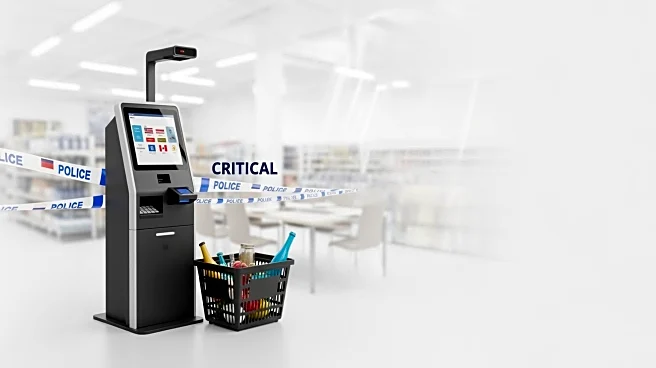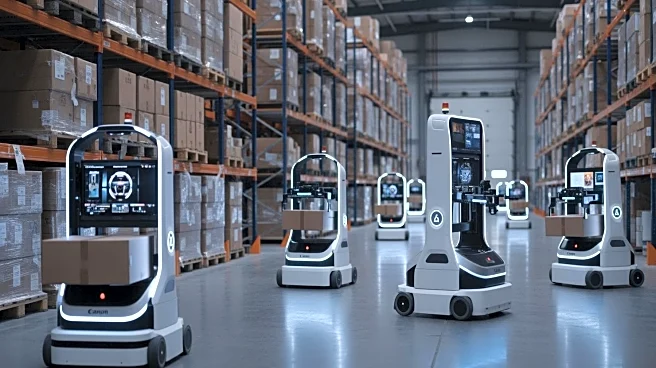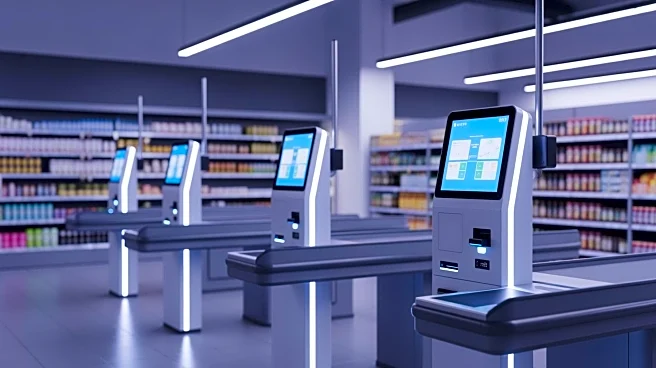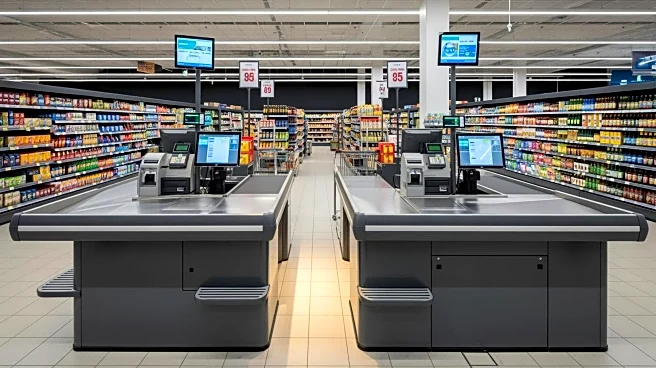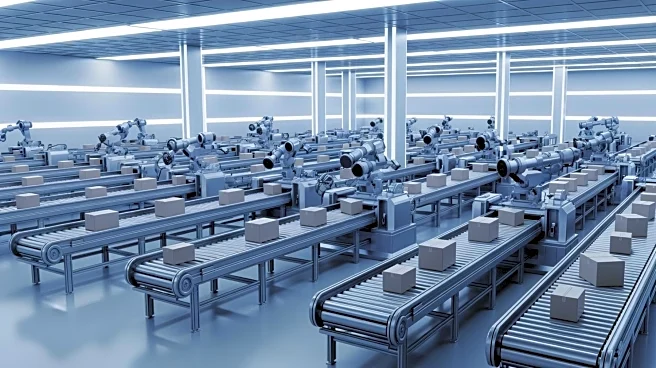What's Happening?
Self-checkout kiosks have become a prevalent feature in grocery stores across the United States, with 96% of stores offering this option as of 2024. This trend has led to a shift in how customers interact with grocery shopping, as many stores now require
shoppers to bag their own groceries. The rise of self-checkouts raises questions about whether they are a convenience that customers appreciate or if they represent a form of unpaid labor that benefits the stores more than the consumers. Anthony Salvanto explores these issues in the latest episode of 'America Unfiltered,' a program that delves into various societal changes and their impacts.
Why It's Important?
The widespread adoption of self-checkout kiosks reflects broader trends in automation and labor within the retail industry. For consumers, self-checkouts can offer a faster and more efficient shopping experience, reducing wait times and allowing for greater control over the checkout process. However, this shift also raises concerns about the potential loss of jobs for cashiers and the expectation for customers to perform tasks traditionally handled by store employees. The debate over self-checkouts touches on larger issues of labor rights, consumer convenience, and the economic implications of automation in retail.
What's Next?
As self-checkout technology continues to evolve, grocery stores may further integrate these systems, potentially leading to more advanced features such as AI-driven customer service or enhanced security measures. Retailers will need to balance the benefits of automation with the need to maintain customer satisfaction and address any negative perceptions. Additionally, there may be increased scrutiny from labor advocates and policymakers regarding the impact of self-checkouts on employment and consumer rights.
Beyond the Headlines
The rise of self-checkouts also highlights cultural shifts in consumer behavior and expectations. As technology becomes more embedded in everyday life, customers may increasingly value speed and efficiency over personal interaction. This trend could influence how other industries approach customer service and automation, potentially leading to broader societal changes in how services are delivered and consumed.
